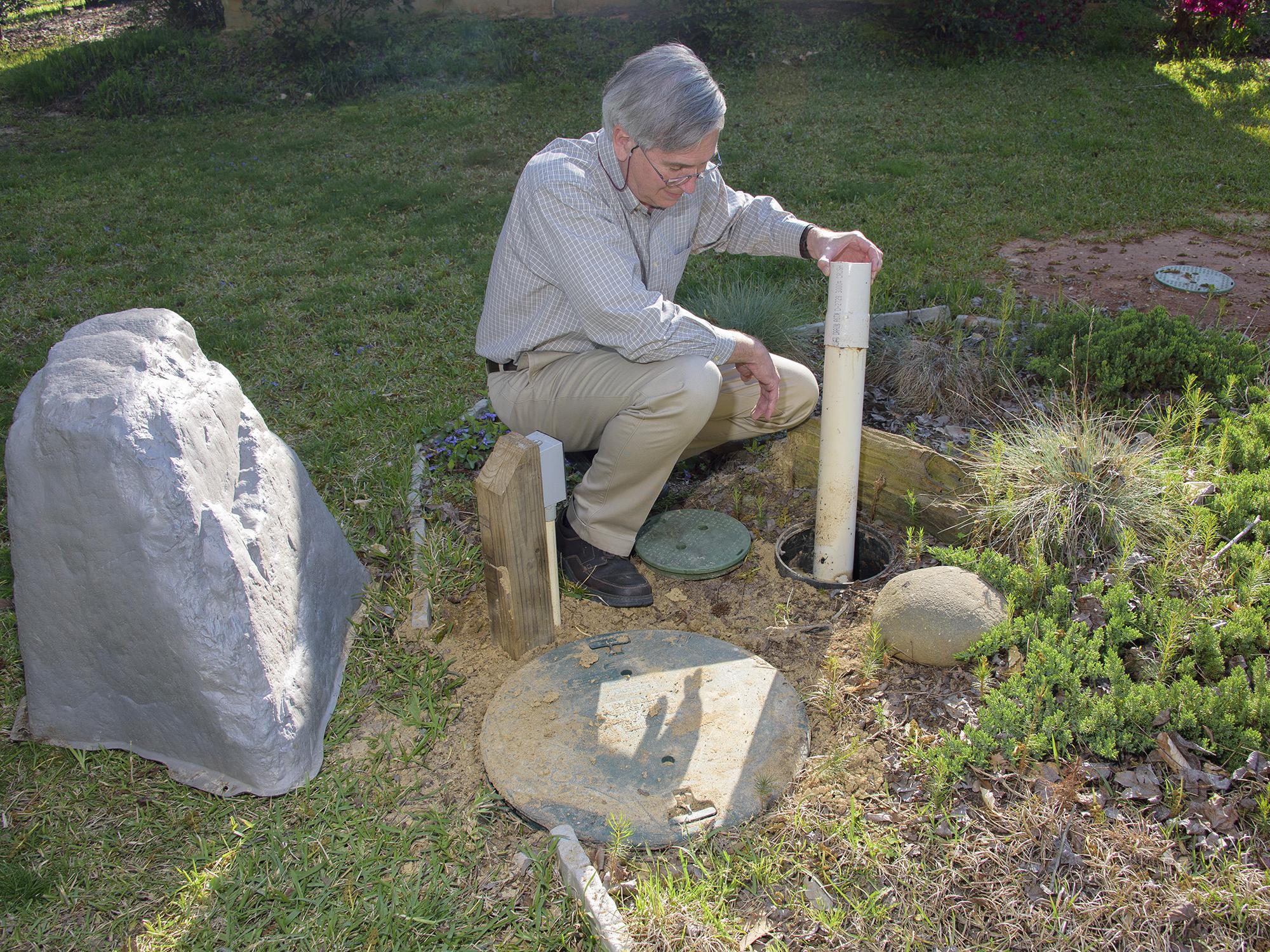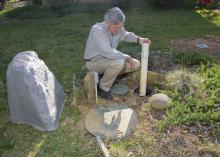Information Possibly Outdated
The information presented on this page was originally released on March 31, 2016. It may not be outdated, but please search our site for more current information. If you plan to quote or reference this information in a publication, please check with the Extension specialist or author before proceeding.
Gray water recycling has part in efficiency
STARKVILLE, Miss. -- Even in a state that averages more than 50 inches of rainfall a year, water conservation is important, and some water recycling has true value to homeowners.
The term “gray water” applies to water that has come in contact with humans, such as from sinks, washing machines, dishwashers, showers and bathtubs. It can be filtered and reused for irrigation and other purposes. Blackwater goes down the toilet and is typically treated commercially.
Cory Gallo, an associate professor in the Mississippi State University Department of Landscape Architecture, explained why water recycling is important in Mississippi.
“Potable, or drinkable, water for much of the state comes from groundwater through aquifers,” Gallo said. “We want to protect our aquifers and not overdraw from them.”
Water is cheap in Mississippi, but nationally, water bills are on the rise as the cost of maintaining the infrastructure increases. Cost savings is one reason people turn to rainwater or gray water recycling.
Gallo said recycling is useful, but rainwater harvesting requires a fairly large cistern if it is to be the sole source of irrigation for a garden or landscape.
“It doesn’t rain every day, so you need to have a much larger cistern to hold enough rainwater to sustain irrigation for a few weeks until it rains again and refills the tank,” he said.
Gallo said gray water harvesting is more cost-effective than storm water harvesting.
“There are daily inputs and outputs of gray water, such as from washing hands or taking a shower,” he said. “Since you contribute gray water daily, you can use a much smaller cistern for its collection.”
A home equipped for gray water recycling typically has two sets of drain pipes coming from the bathroom and one set from the kitchen and laundry room. Water from all but the toilets is passed through a physical filter to remove solids and an ultraviolet filter to remove harmful microorganisms. The water can then be piped back inside to flush toilets.
“This is much more advantageous to install with new construction, and on commercial buildings, it works best when buildings are designed with one restroom on top of the other,” Gallo said. “It’s not as effective in buildings that are long and spread out.”
Gray water can also be used for lawn and garden irrigation, which is how Mike Boyles, a homeowner in Winston County, uses the gray water system he installed about two years ago.
“In my case, a pipe that comes out of the system is attached to sprinklers, and I use it to water the lawn,” Boyles said. “If you want to keep your lawn green in August in Mississippi, you need water. With my system, I have a green lawn just about year around.”
Gallo said where water is more costly, gray water recycling systems are more quickly being adopted. If water conservation is the primary goal, technology is the best place to start.
“Technology can have a dramatic reduction in water use,” Gallo said. “Choose low-flow fixtures and water conserving appliances. There’s no up cost in those systems because they’ve become standard practice. Behavior is next, then gray water.”
Contact: Cory Gallo, 662-325-3249








